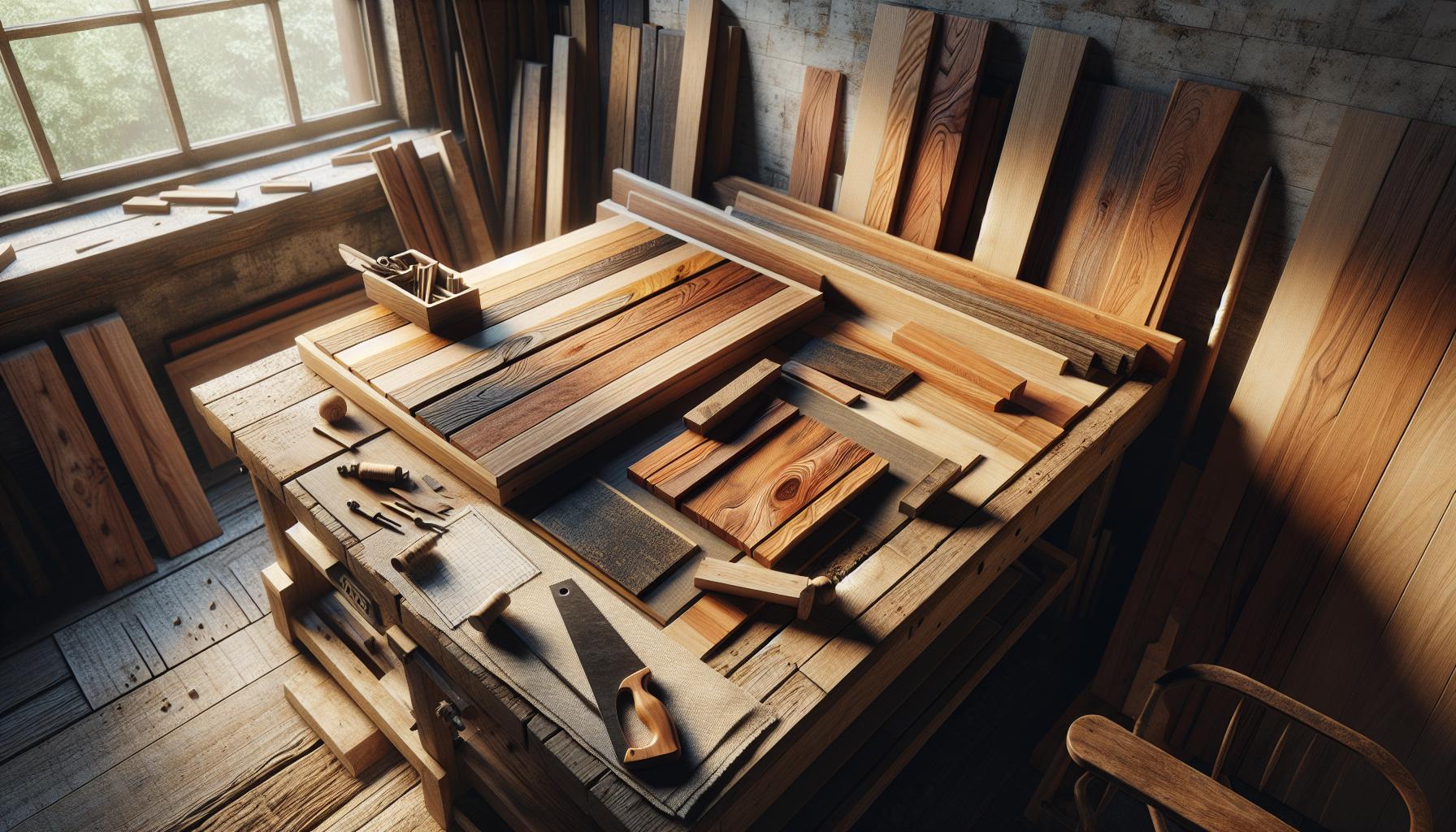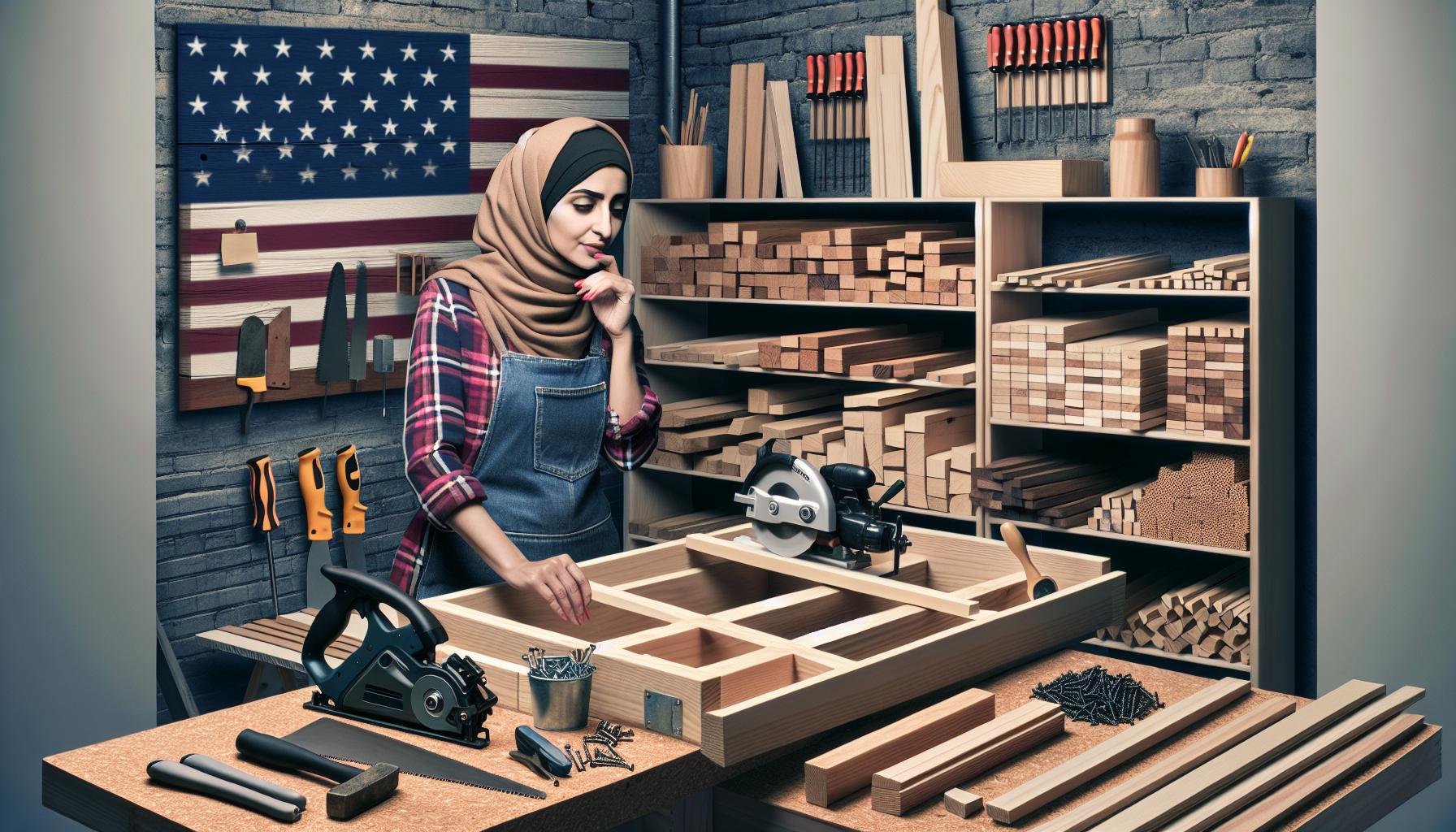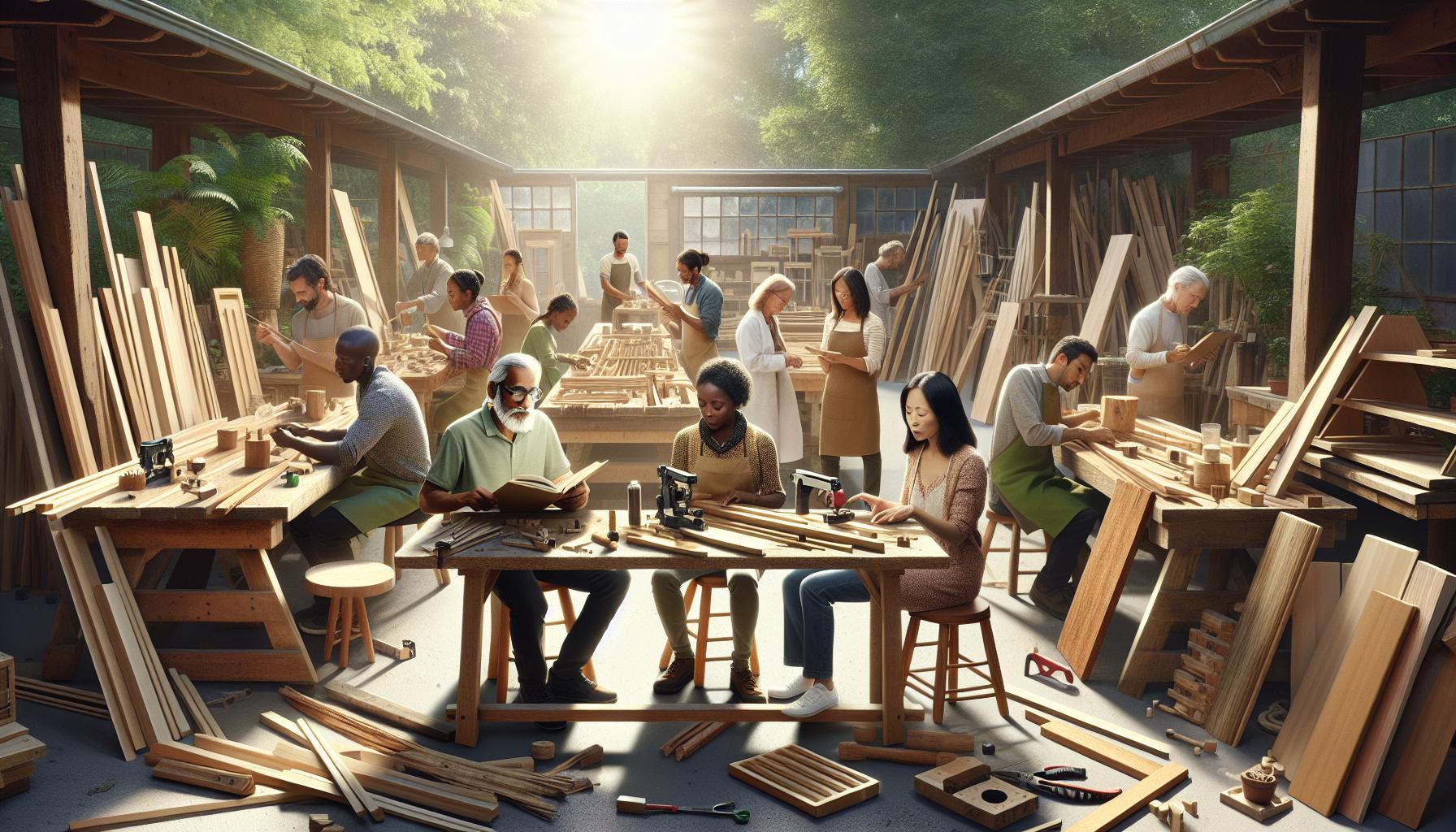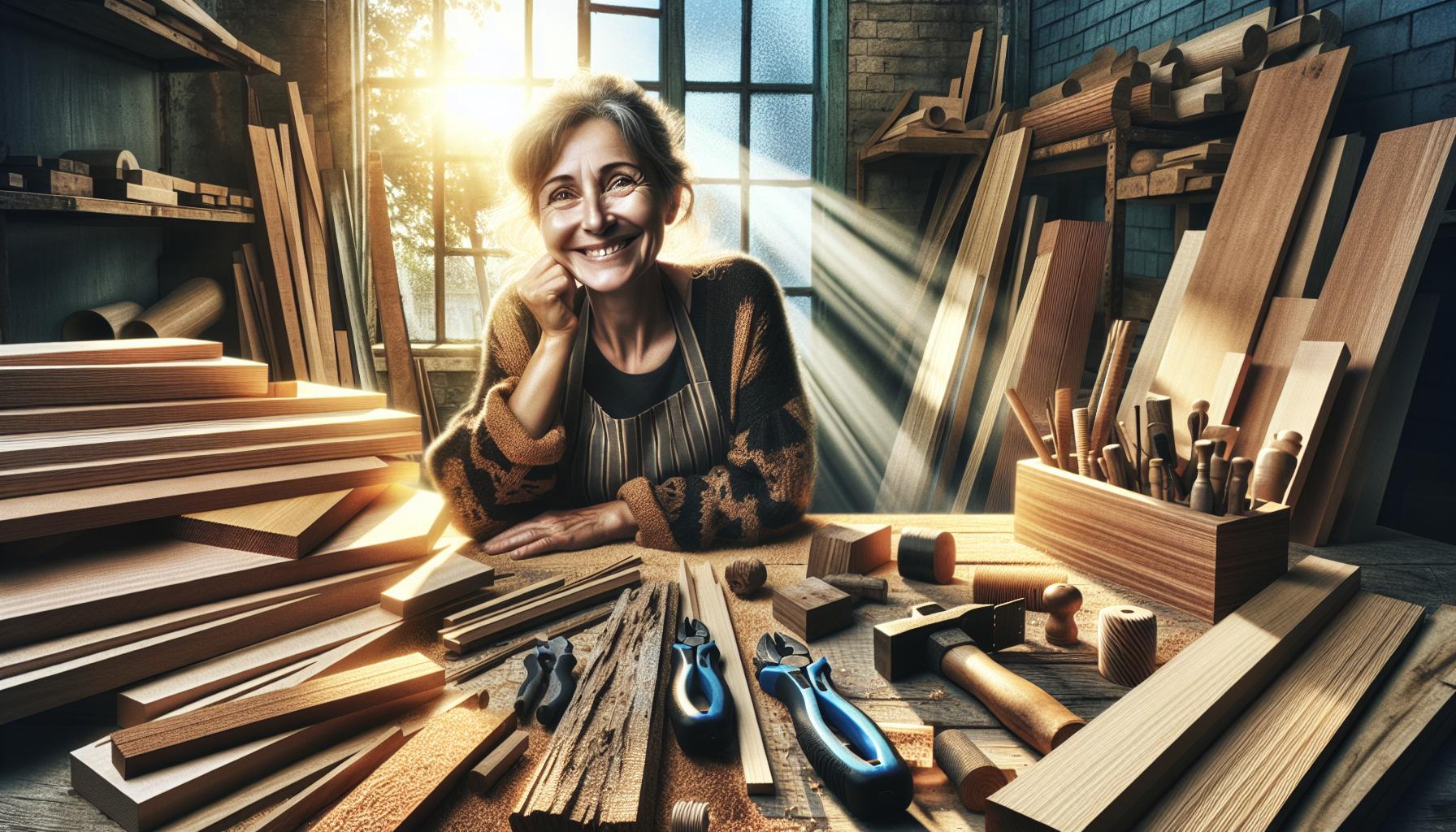
Diving into the world of DIY projects is both exciting and rewarding, especially when working with wood. There’s something about the smell of fresh lumber and the satisfaction of crafting something with your own hands that captivates the soul. Whether you’re a seasoned carpenter or a weekend warrior, choosing the right wood can make all the difference in your project’s success.
From the rich tones of mahogany to the sturdy grain of oak, each type of wood brings its own unique characteristics and challenges. Understanding these nuances not only enhances the quality of your work but also boosts your confidence in tackling more complex projects. I’ll guide you through the essentials of selecting the perfect wood for your DIY adventures, ensuring your creations are both beautiful and durable. Let’s explore the possibilities and transform your ideas into stunning, tangible reality.
Key Takeaways
- Understanding the types of wood, such as softwoods like pine and cedar, or hardwoods like oak and mahogany, is crucial for DIY projects and influences both aesthetics and durability.
- Consider factors like durability, cost, and ease of use when selecting wood; softwoods are often more affordable and easier to work with, while hardwoods offer greater strength and longevity.
- Different woods serve specific project needs: pine is ideal for furniture, cedar excels in outdoor projects, and birch is perfect for crafting and decorative items.
- Choosing sustainable wood options, such as reclaimed wood and locally sourced materials, benefits both the environment and local economies.
- Proper selection and use of tools, coupled with essential safety tips, ensure successful and enjoyable woodworking experiences in DIY projects.
Wood For DIY Projects
Understanding the types of wood is essential for any DIY project. Every wood variety has its unique properties that can influence the outcome of your creation.
Softwoods
Softwoods like pine and cedar are popular for DIY projects due to their affordability and ease of use. Pine is versatile and paints well, making it ideal for furniture and decorative pieces. Cedar is decay-resistant, perfect for outdoor projects such as planters and outdoor furniture. These woods are easy to cut and sand, offering great flexibility for beginners.
Hardwoods
Hardwoods such as oak and mahogany provide durability and an elegant appearance. Oak, known for its strength, is excellent for high-quality furniture and flooring projects. Mahogany offers a rich color and smooth finish, perfect for detailed cabinet work. Hardwoods often have intricate grain patterns, adding aesthetic value to any project.
Factors To Consider When Choosing Wood


Selecting the right wood impacts the quality and success of a DIY project. Several key factors, such as durability, cost, and ease of use, guide this decision.
Durability
Durability in wood affects the longevity of the finished product. Hardwoods, like oak and mahogany, offer greater strength and resistance, making them suitable for high-traffic furniture. In contrast, softwoods, such as pine, while easier to work with, are less durable and best for projects with lighter use. Consider the intended use duration when choosing the wood type.
Cost
Cost is essential for any project. Softwoods, such as cedar and pine, typically cost less, making them ideal for budget-conscious DIYers. Hardwoods, like mahogany, cost more due to their strength and aesthetic value. Match the wood choice with both your budget and the project’s importance to ensure financial feasibility.
Ease Of Use
Ease of use impacts your project experience, especially if you’re a beginner. Softwoods, such as pine, are generally easier to cut and shape, enhancing your woodworking skills. Hardwoods like oak may require more advanced tools and techniques. Think about your skill level when selecting wood for optimal DIY results.
Popular Wood Choices For Different Projects


Selecting the right wood is crucial for any DIY project. Each type of wood brings unique advantages that complement diverse project needs.
Pine For Furniture Building
Pine is a top choice for furniture. It’s not only affordable but also easy to work with, making it ideal for beginners. Pine’s ability to take paint well allows for creative finishes, whether I’m looking for a modern look or rustic charm. According to the University of Kentucky’s Forestry Department, pine’s availability makes it a practical option for projects like tables or bookshelves that don’t require the hardness of oak.
Cedar For Outdoor Projects
For outdoor projects, cedar excels. Cedar naturally resists decay and insect damage, according to Purdue University’s forestry resources. Its lightweight nature and pleasant aroma add to its appeal. I’m likely to use cedar for garden furniture or decking, where durability in various weather conditions is essential. The wood’s beauty enhances outdoor aesthetics, providing both functionality and style.
Birch For Crafting And Decor
When crafting smaller decor items, birch stands out. Its fine grain and smooth finish make it perfect for intricate designs, as noted by Western Wood Products Association. Birch’s light color and ability to hold stains beautifully allow for versatile aesthetic choices. I’m inclined to use birch for picture frames, toys, or small decorative pieces that require precision and a polished look.
Sustainability And Sourcing


Exploring sustainable wood options promotes eco-friendly DIY projects. Responsible sourcing ensures the longevity of both your creations and the planet.
Eco-friendly Options
Choosing eco-friendly wood helps lower environmental impact. Reclaimed wood is a notable choice; it repurposes old wood and reduces deforestation. Bamboo, considered a grass, matures quickly, replenishing natural stocks more rapidly than traditional wood. Certified lumber from organizations like the Forest Stewardship Council (FSC) guarantees responsibly managed forests.
Local Vs. Imported Wood
Local wood has benefits for both the environment and the community. It usually requires less transportation, which lowers carbon footprints. Moreover, buying local supports area economies and reduces dependency on international trade. In contrast, imported wood offers unique varieties and aesthetic options unavailable locally, but with the trade-off of higher environmental costs and greater supply chain complexity.
Tips For Working With Wood
Working with wood involves several techniques and requires the right approach to ensure successful DIY projects. Here, I share essential insights into tools and equipment and crucial safety measures.
Tools And Equipment Needed
Selecting the right tools is crucial when diving into woodworking. I always start with these basic tools:
- Saw: A reliable hand saw or circular saw is necessary for cutting wood to size.
- Drill: A power drill simplifies creating holes and assembling pieces.
- Sander: An electric sander ensures smooth finishes, vital for polished surfaces.
- Tape Measure: Accurate measurements depend on a precise tape measure.
- Clamps: Clamps hold pieces steady during work, providing stability.
Advanced projects might call for additional equipment like routers or chisels. These tools expand creative possibilities by allowing more intricate designs.
Safety Tips
Ensuring safety is paramount when working with wood. Here are precautions I prioritize:
- Protection Gear: I wear safety goggles and gloves to shield eyes and hands from debris and injury.
- Ventilation: Adequate ventilation is necessary, especially when sealing wood to prevent inhaling harmful fumes.
- Tool Handling: I maintain proper tool handling techniques, like securing blades and unplugging machinery when not in use.
- Workspace Organization: A tidied workspace minimizes tripping hazards and improves focus.
- Awareness: Staying alert and avoiding distractions prevents accidents, especially when using power tools.
These strategies safeguard both the woodworker and the project, ensuring an enjoyable and injury-free woodworking experience.
Woodworking Endeavour
Embarking on a DIY woodworking journey is both fulfilling and creative. By understanding the unique qualities of different wood types, I can select the perfect material for any project. Whether I’m drawn to the affordability and ease of softwoods or the elegance and strength of hardwoods, each choice plays a crucial role in the final outcome. Considering sustainability and sourcing not only benefits my projects but also supports the environment. Equipped with the right tools and safety practices, I can confidently tackle any woodworking endeavor. This knowledge empowers me to create beautiful, durable, and eco-friendly projects that I can be proud of.


